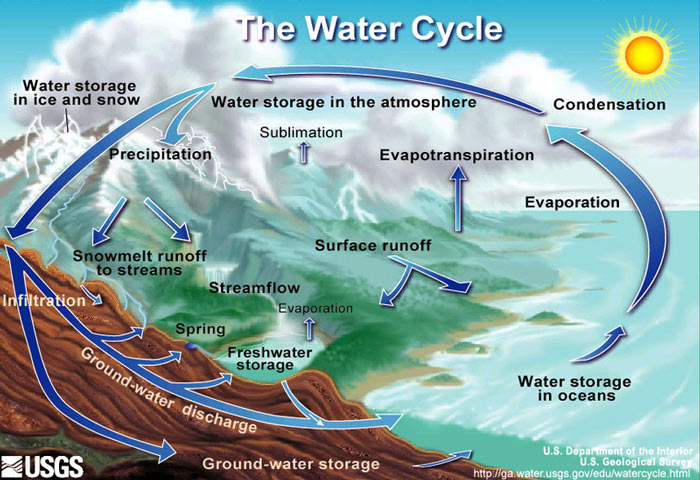
| | Updated Diagram: This updated water cycle diagram from the USGS is perfect for kids! It does a great job of explaining how the water cycle works using simple language and colorful illustrations that kids will enjoy. Check out the giant 1550 x 1105 version and see for yourself! (opens in a new window) |
Evaporation:
Heat from the Sun causes water on Earth (in oceans, lakes etc) to evaporate (turn from liquid into gas) and rise into the sky. This water vapor collects in the sky in the form of clouds.
Condensation:
As water vapor in the clouds cools down it becomes water again, this process is called condensation.
Precipitation:
Water falls from the sky in the form of rain, snow, hail, or sleet, this process is called precipitation.
Collection:
Oceans and lakes collect water that has fallen. Water evaporates into the sky again and the cycle continues.
| | More Weather Facts! |
| | |
| | |
| | |
| | |
| | |
| | |
| | |
| | |
| | |
| | The Water Cycle |
| | |
| | |
| | |
Extra:
Transpiration:
In a process similar to sweating, plants lose water which is absorbed into the atmosphere much like evaporation. The combination of evaporation and transpiration is known as evapotranspiration.
Sublimation:
It is possible for a solid to transform into a gas directly (without becoming a liquid). The most common example of sublimation is dry ice (solid carbon dioxide) which sublimes at normal air temperature. Under certain conditions snow and ice can also sublime.